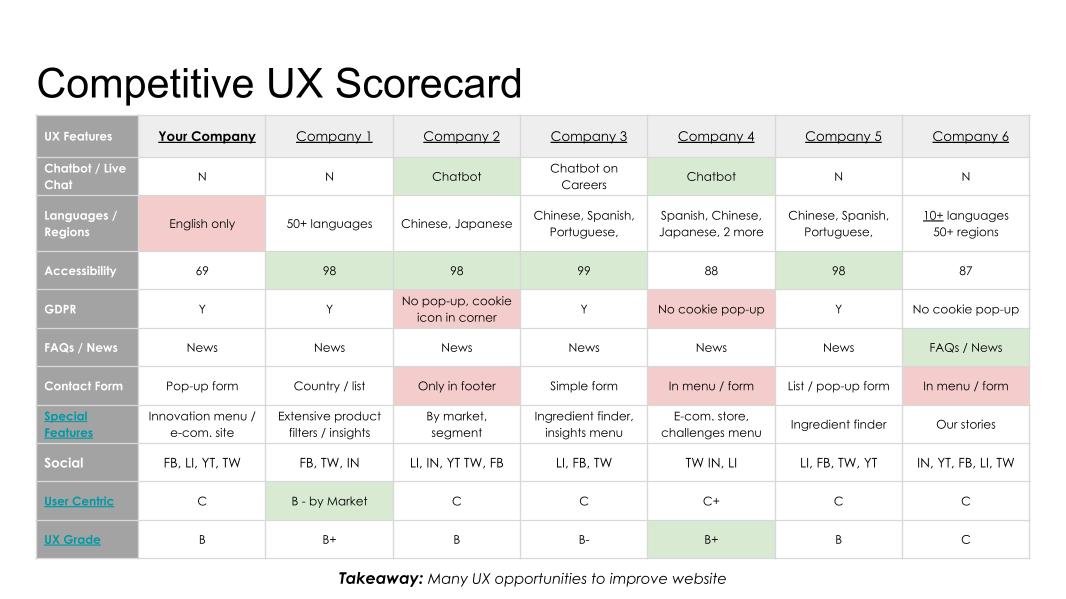
CONTACT ME
Email: artasker11@gmail.com
Objective:
Develop a solution strategy for increasing website visibility and engagement by creating a case for improving/implementing User Experience and User-Driven Design based on research and analytics from competitor websites.
As an eCommerce site, emphasis is placed on improving the experience for specific users trying to find specific products so they are more likely to use the client’s site.
Tools:
Google Slides, Google Sheets, Google PageSpeed Insights, AccesibilityChecker.com, BuiltWith.com, SimilarWeb.com, Ahrefs.com, Owler.com. Spyfu.com
At DPA software, we follow a repeatable method of researching and developing an understanding of a client’s competition. We begin our research with the Digital Footprint, where we gather data surrounding our client and their competition’s current presence online to see what is working currently, what could be fixed, and what could be working better.
The end goal of Competitive Analysis is to learn from competition to reliably boost user engagement using provable data.
Next, we measure the current UX standards of the websites of our client and their top competitors.
We check for several different metrics on the UX Scorecard page that check what is readily available to users, whether the websites follow common website conventions, anything unique that stands out, and if the website achieves reasonable accessibility standards.
Additionally, we check for how the websites market themselves (socials, technology used), how well the products sold are organized, and the different observations and opportunities we gather from comparing the research.
Because we are working with eCommerce websites, we make sure to closely observe:
These pages are instrumental in the user achieving their goal as a consumer of our client’s products. By observing how our client currently handles organizing and detailing their products (vs how their competition does), we can discover strong, research-backed insight on improving the metrics from previous sections.

Now that we have built a solid foundational understanding of both our client and their competitor’s sites, we further build on our research case by counting the amount of content each site has.
Here, we want to begin drawing comparisons between content and keywords. A website’s Domain Authority is dependent on the effective implementation of keywords into a website’s content, which results in higher ranking on search engines, as well as more opportunities to appear in related searches.
There is something to gain from researching competitors with both high and low Domain Authority, since we can see which types of content they have more/less of, and develop strategies for our client’s site based on this.
In certain cases where there may be little correlation between content, keywords and Domain Authority, that itself is something to investigate and think about.

 Water Purification App Design Refresh
Water Purification App Design Refresh